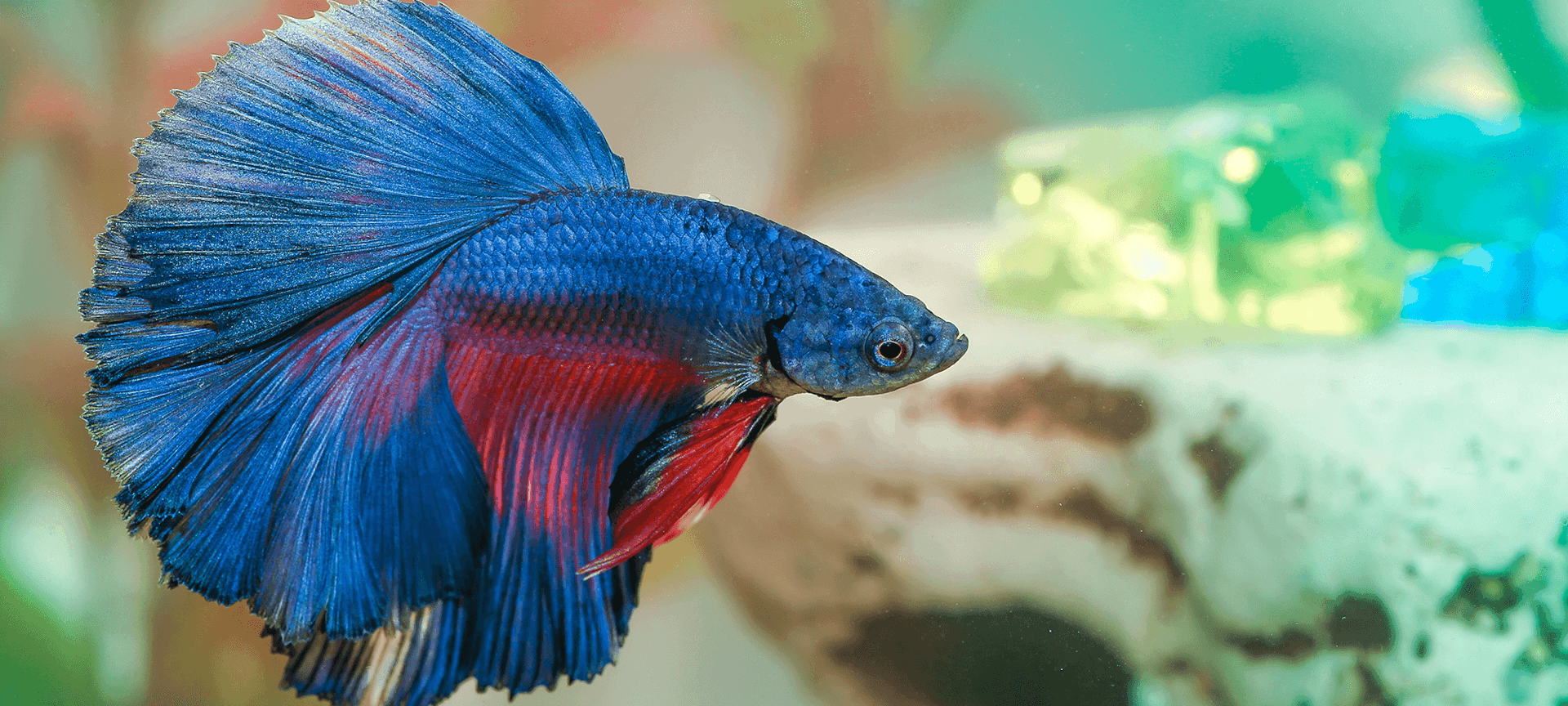
We know, it can be overwhelming when you walk into a large aquarium or pet store and are greeted by tanks and tanks of fish across breeds, colours, shapes and sizes, etc. There are just so many to choose from, so where do you begin?
Please use this as a guide only. If you’d like to find out more about the most suitable fish to buy, please reach out to your friendly local Petstock fish specialist. Find out where your nearest Petstock store is with our Store Finder.
Starting off
It seems like overly pedantic common sense, but always do your research. When choosing fish, ensure you’re picking breeds that can live together harmoniously, not only in compatibility but also across things like preferring similar water temperature and pH levels, types of food, behaviour patterns, etc.
It seems trivial, but getting this right from the start means you’ll have a beautiful, thriving underwater ecosystem in no time.
There are a couple of ways to approach the purchase and introduction of your fish, and it has a lot to do with the set up of your tank, including the nitrogen cycle (tank cycle), and long-term plan on how many fish you want to keep. Depending on which tank set up method you choose, you might be best to choose hardier fish as the first mates to add to your tank – which are generally cold (fresh) water fish. When adding more fish to your tank, be mindful of buying and introducing only the minimum number of fish (two at most) each time, as too many new introductions can cause stress not only amongst your resident fish, but also the new ones.
Cold Water Fish
Cold water fish, are often the most common choice for new aquarists (the fish novice), as they’re relatively low-maintenance, can come in many shapes and sizes and are reasonably inexpensive.
It is, however, worth noting that some freshwater breeds can grow up to 20cm or more, so find out as much as you can about the breeds you’ve been eyeing, to avoid any last-minute surprises at home.
Cold water fish do still require a tank filter, as it will help maintain the water quality and cleanliness of their habitat. Without a filter, the tank water will get dirty easily, which causes unnecessary stress on your fish. It will also mean you need to change the water every two to three days and will become quite difficult to maintain long term.
Types of cold water fish include:
- Goldfish
- Danios
- Catfish
- White Clouds
Tropical Fish
Tropical fish are popular due to the wide variety of colours, patterns, shapes and sizes available, and these eclectic choices adds an exotic feel to any tank/aquarium.
However, you should note that they can require higher levels of care than cold water fish, and sometimes even specialist equipment like a heater, thermometer, air pump, etc. This is because tropical fish are used to warmer waters, so your tank water needs to remain consistent around 26 degrees Celsius, and the water needs to be fully oxygenated as well (hence the air pump).
In general, tropical fish can live peacefully, though keep in mind there are some breeds that are more territorial and/or aggressive, and are best kept on their own. Remember to check with the store specialist before purchasing, as you wouldn’t want to risk stressing any resident fish.
Types of tropical fish include:
- Guppie
- Molly
- Loach
- Betta
- Tetra
- Barb
Purchasing Fish
When looking to buy, always purchase your fish from reputable sellers/stores, so you can be sure that what you get are healthy fish that have come from thriving aquarium/tank ecosystems.
Once purchased, you’ll receive your fish in a tightly tied plastic bag filled with oxygen. This is so you can travel conveniently with your new fish, though it can only survive in the bag for about an hour, so make sure you’re going straight home.
Adding fish to the fish tank
When introducing new fish to your tank, the following steps will be useful for you:
- Open the lid of your tank and float the new fish in the plastic bag for about 10 - 15 minutes, to help them acclimatise to the tank’s water temperature.
- After the 10 - 15 minutes, you can add your fish into the tank, but do ensure no water from the bag gets into the tank. Fish can generate waste which becomes ammonia while travelling, and you wouldn’t want to get any of the contaminated water into the tank you’ve so carefully set up and maintained.
- The best thing you can do when moving fish is to buy an appropriately sized net to scoop your fish out of the bag and into the tank. Do keep any travelling/movements to a minimum, to avoid stressing your fish.
- Do not feed the new fish for 24 hours after introducing them to the tank, and remember to keep the light off as well. This will simply ease their transition into a new environment, and avoid any unnecessary stress on your new underwater buddy.